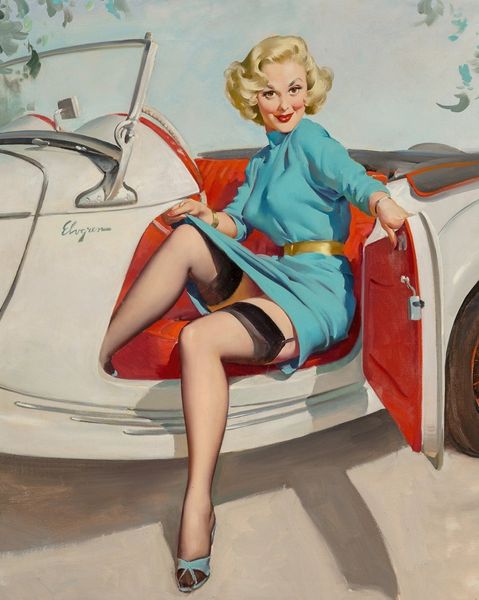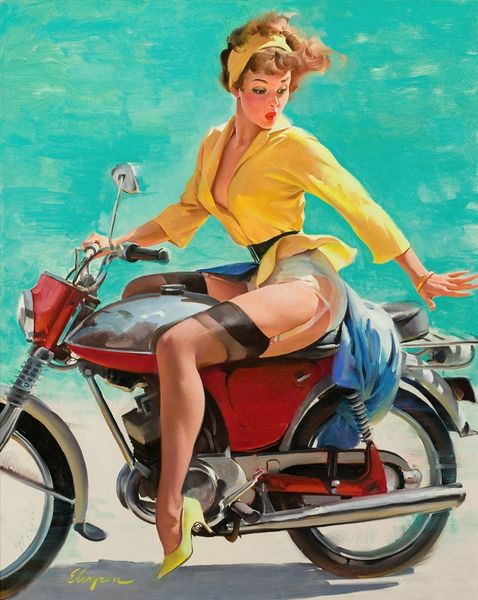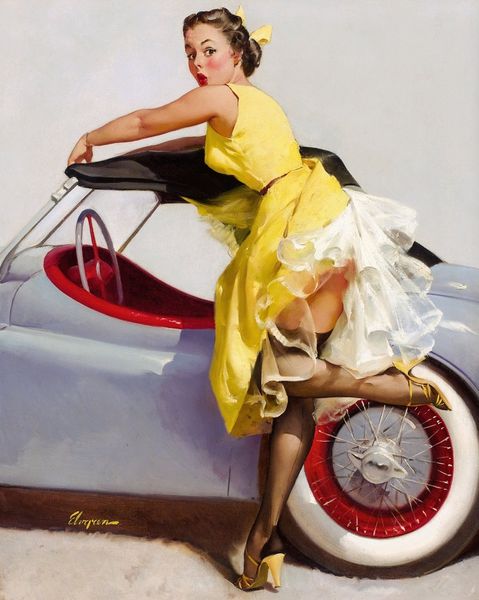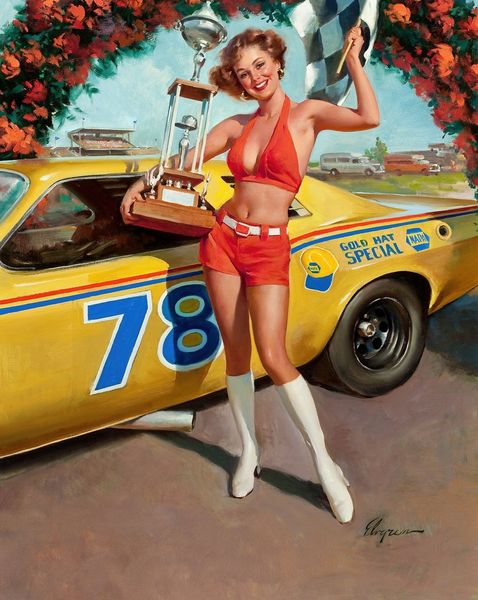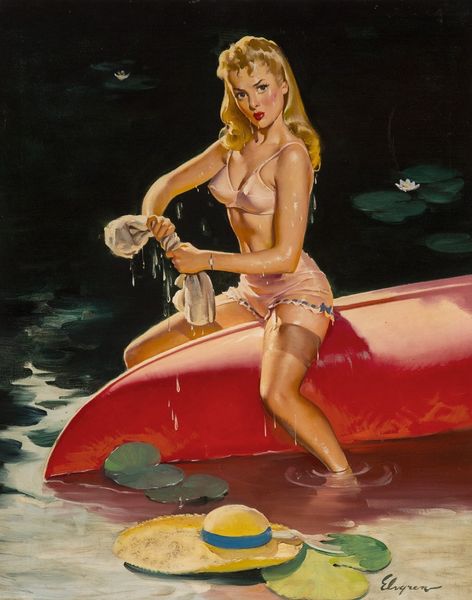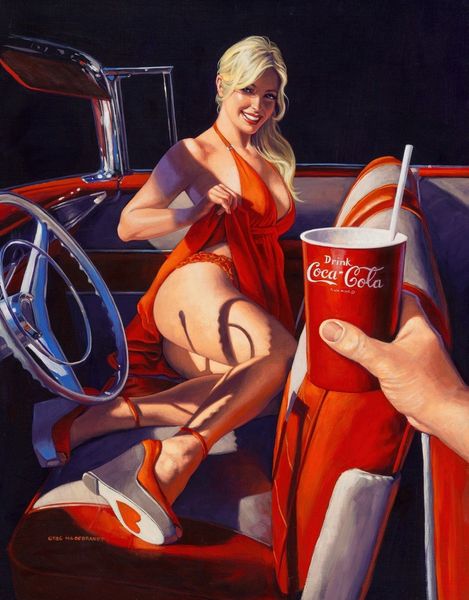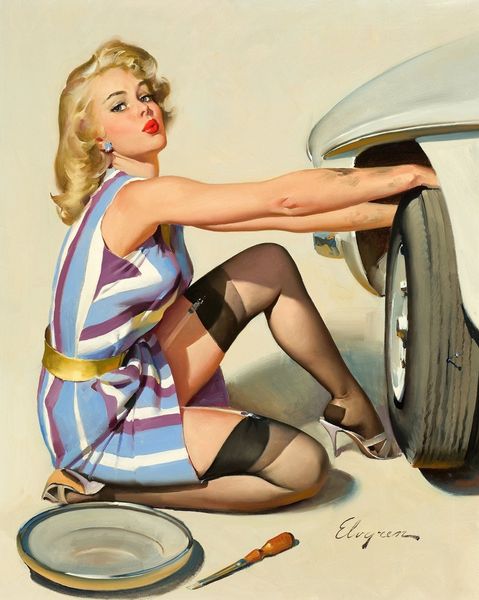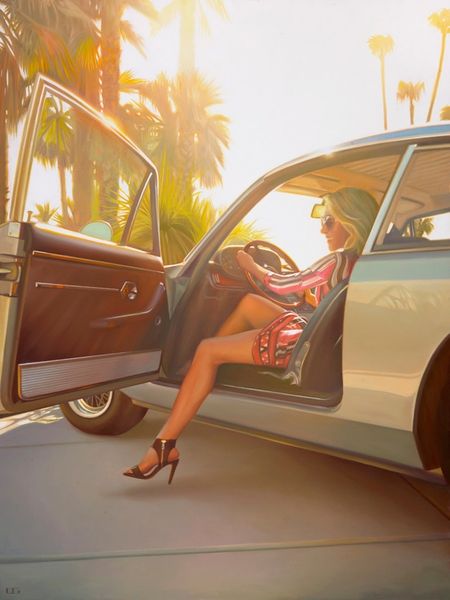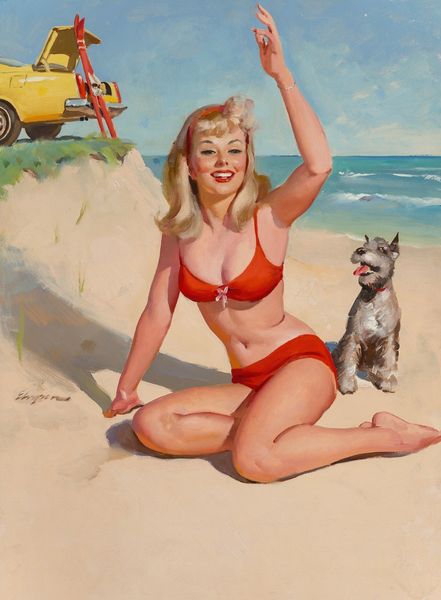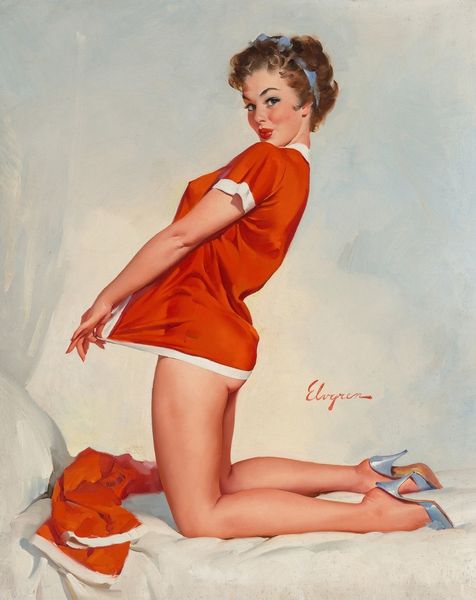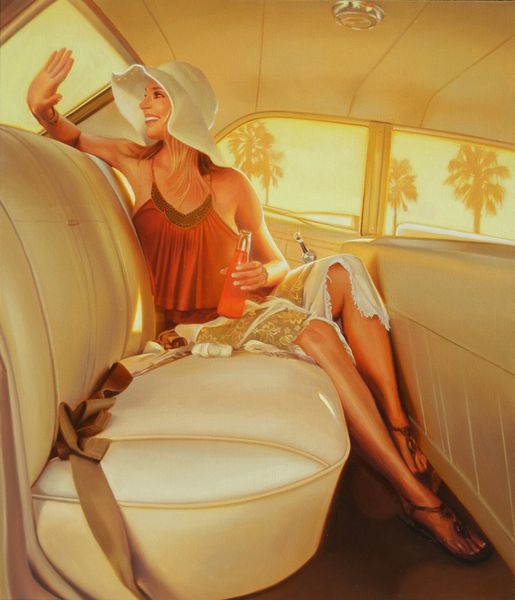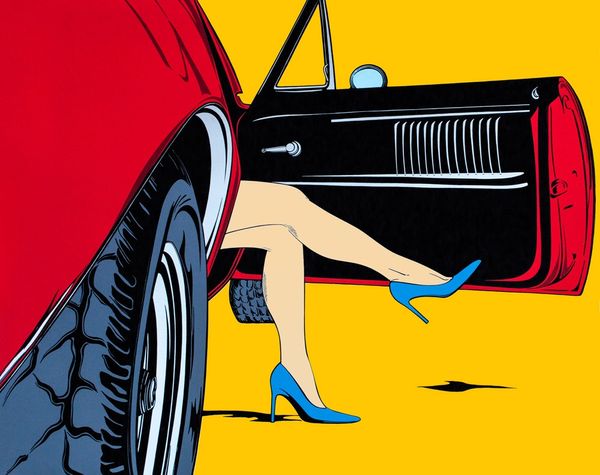
painting, plein-air, acrylic-paint
#
portrait
#
painting
#
plein-air
#
kitsch
#
acrylic-paint
#
figuration
#
genre-painting
#
nude
#
erotic-art
#
realism
Copyright: Modern Artists: Artvee
Curator: Well, hello there! This eye-catching work is "Grease Monkey" by Greg Hildebrandt, painted in 2008 using acrylics in the plein-air style. Editor: It certainly grabs your attention. My immediate thought is… Cheesecake! Is that a '57 Chevy? This definitely harkens back to those vintage pin-up calendars, with a playful yet suggestive nod. Curator: Indeed. Hildebrandt expertly uses the visual language of the mid-20th century, merging the imagery of cars and pin-up models into an updated version of familiar cultural iconography. Notice how the open hood of the car mimics her suggestive pose? Editor: I do now. I see the ways the artist used the cultural fascination with cars to sell idealized womanhood, but I find it hard to ignore the blatant objectification at play here. Curator: Perhaps. But I also see a reclamation of that imagery. This "Grease Monkey" figure has a clear visual heritage of strong, seductive icons like Rosie the Riveter. The symbols have become twisted, reflecting a nuanced history of female empowerment. Editor: That is a fascinating read. Even the open hood of the car takes on an alternative symbolism. Historically, cars symbolized progress, escape, and individual freedom, yet now they may symbolize an ecological concern that is actively threatening our species. Curator: Quite astute! The tool she’s holding certainly becomes a visual metaphor in your interpretation, a symbol for solutions or, potentially, further pollution. Hildebrandt, likely intentionally, creates tension through the contrast and ambiguity of the presented motifs. Editor: Which, of course, raises the fascinating question: how will viewers decades from now interpret it all, viewing it through yet another socio-political lens? Curator: And with that, we’ve come full circle: Symbols are fluid and contingent, shifting meaning depending on how and by whom they are consumed. It’s precisely that open quality that makes them such enduring sources of cultural insight. Editor: Indeed! Art forces us to think critically about what was, what is, and, importantly, what will be. And that is no small feat!
Comments
No comments
Be the first to comment and join the conversation on the ultimate creative platform.
